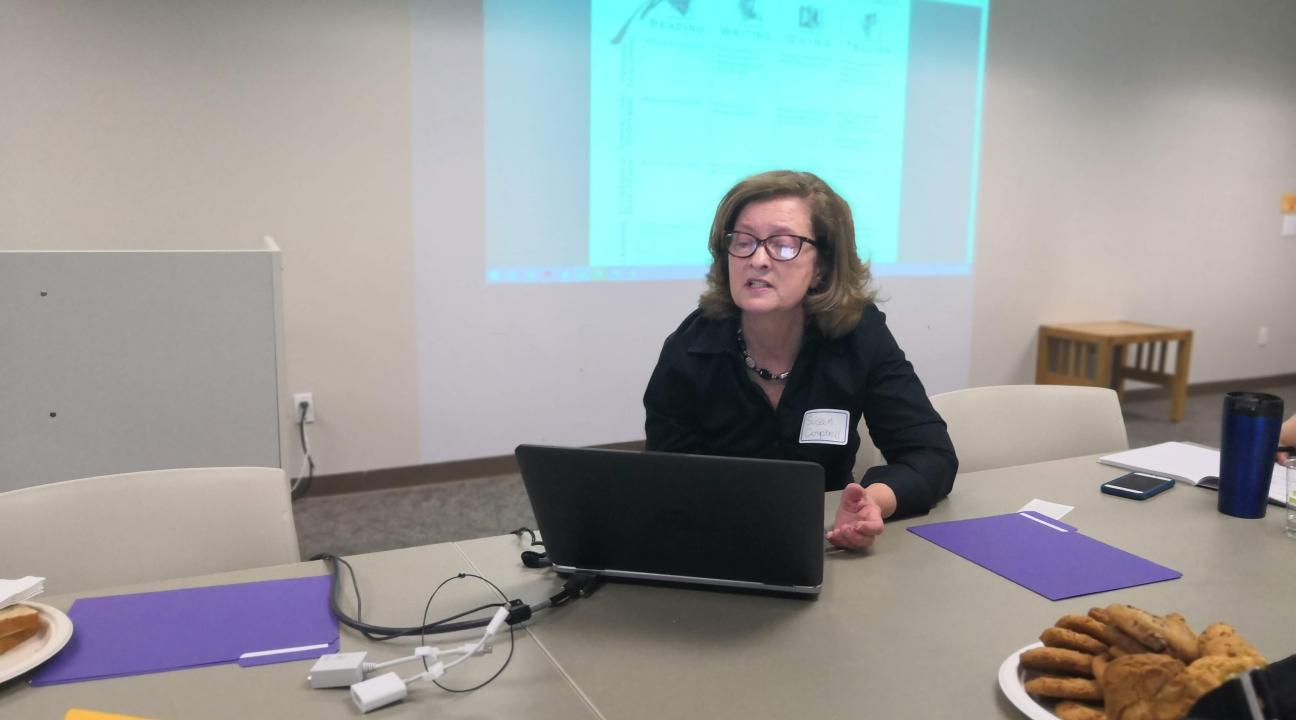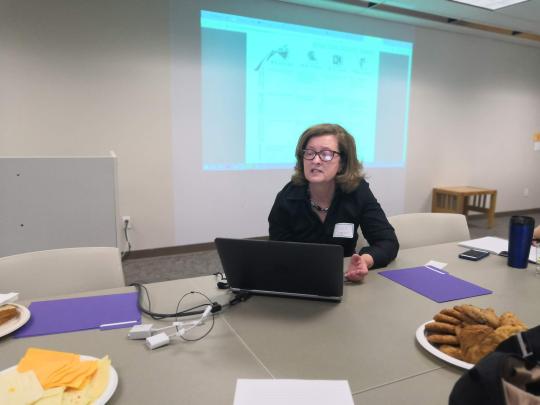The Importance of Reflection in Service-Learning Tips for More Meaningful Reflection in the Classroom
Dr. Lynn Cominsky, voiced her frustration when attempting this critical part of the service-learning process: “Tell me something real; don’t just tell me what you think I want to hear.” Recently, Dr. Susan Campbell from the Department of Literacy, Elementary and Early Education and also a Faculty Fellow in the Center for Community Engagement (CCE); offered a workshop on the importance of meaningful reflection. The workshop started with faculty members thinking about why they came to the workshop. They all agreed that they wanted their reflection in their service-learning classes to have more meaning and depth. Dr. Campbell began by reminding faculty members that the CCE website has some great tools for faculty to use when designing their service-learning class. Thus, going to the website is a resourceful place to go first.
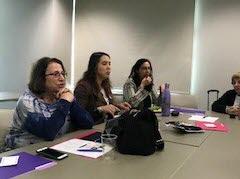
Attendees discussing how they
approach reflection in their
service-learning classes.
Related: Spotlight: University & Community Partnership in Literacy Studies and Elementary Education
Faculty also talked about other ways to connect their students to the goals of the community partner. “What makes sense to the community partner?” Requiring students to go to the site and meet the community partner or ask the community partner to come to class and make a presentation about what they need for their program and how students can help could lead to a whole different vision. Some faculty talked about asking students to submit journals and then add reflections in their journals. Then the question of doing reflections on their reflections came up and someone asked is there such a thing as too much reflection?
Related: Welcome, Emily & Susan!
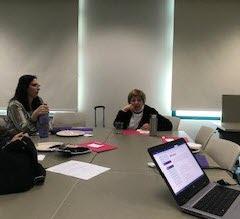
Attendees thinking about how to have
more authentic reflection.
Merith Weisman, Director of Community Engagement and Strategic Initiatives, reminded faculty to ask their students: What; So what; Now what? This process of what, so what, now what; provides a framework for the reflection part of service-learning; as a way of more fully analyzing the student’s experience.
Dr. Campbell talked about the The Tools for Critical Analysis on the CCE website; which offers a number of ways to reflect on the class; including journals or drawing; as well as other paths for assessment, scoring and feedback. The faculty seemed grateful to have tools they can use in their service-learning class that would demonstrate purposeful reflection. Actually getting students to reflect in an authentic manner and being able to assess if there is any actual transformation is a challenge for many faculty. “This was very helpful. I’m going to change the approach to reflection (since we haven’t done it yet this semester),” stated Dr. Cominsky.
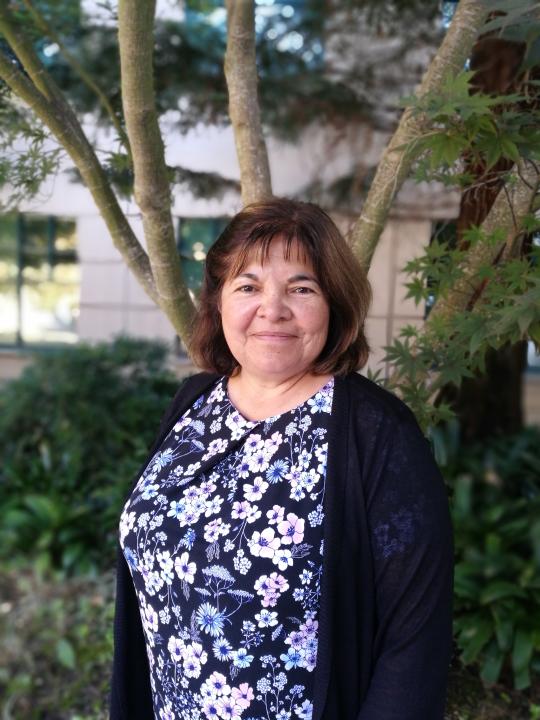
Author: Caroline Bañuelos


